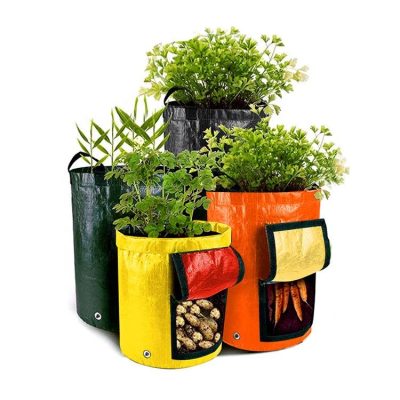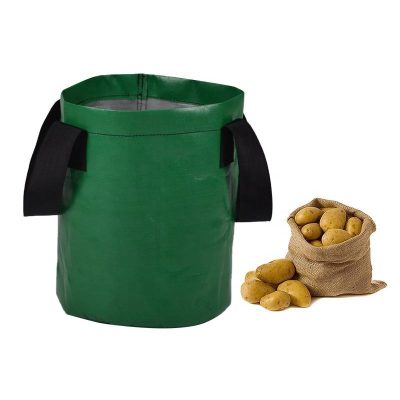When choosing the size and thickness of woven plastic grow bags, consider the specific needs of your plants and the growing environment. Here are some factors to consider:
- Size: The size of the woven plastic grow bag should be determined by the mature size of the plant and the space available for gardening. Consider the following guidelines:
- Small Size (1-3 gallons): Suitable for growing herbs, small flowers, or compact vegetables with shallow root systems.
- Medium Size (5-10 gallons): Ideal for most vegetables, such as tomatoes, peppers, and leafy greens.
- Large Size (15+ gallons): Recommended for larger plants like fruit trees, shrubs, or plants that require extensive root space.
Ensure that the chosen size provides enough room for the roots to spread and grow. Overcrowding can lead to stunted growth and nutrient deficiencies.
- Thickness: The thickness of the woven plastic grow bag is an important consideration for durability and insulation. Thicker bags generally offer better resistance to tearing and puncturing, ensuring a longer lifespan. Thicker bags also provide better insulation against temperature fluctuations, which can be beneficial in extreme climates.
- Thin Bags (less than 150 microns): These bags are lightweight and suitable for short-term or seasonal use. They may be more prone to tearing, especially if handled roughly or in challenging weather conditions.
- Medium to Thick Bags (150 to 300+ microns): These bags offer increased durability and are suitable for long-term use. They provide better protection against tearing and offer improved insulation for the roots.
Consider the specific requirements of your gardening setup and the expected longevity of the grow bags when selecting the appropriate thickness.
- Consideration for Plant Type: Different plants have varying root systems and growth habits. Some plants, such as those with deep taproots or extensive lateral root systems, may require larger and deeper grow bags. Consider the specific needs of your plants to ensure they have sufficient space for healthy root development.
- Environmental Factors: Take into account the local climate and environmental conditions when selecting the size and thickness of the grow bags. In hot climates, thicker bags can provide better insulation against heat, preventing the roots from overheating. In colder climates, thicker bags can help retain heat and protect the roots from cold temperatures.
- Mobility and Portability: If you need to move or rearrange your grow bags frequently, consider the weight and ease of handling. Thicker bags may be heavier, while thinner bags are typically lighter and more portable.
Ultimately, the size and thickness of woven plastic grow bags should align with the specific needs of your plants, the available space, and your gardening goals. Consider factors such as plant size, root development, durability requirements, and the growing environment to make an informed choice.








